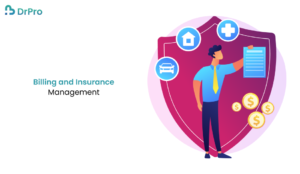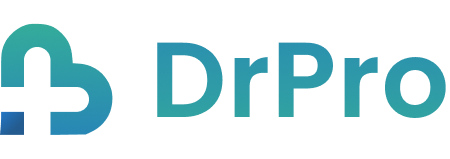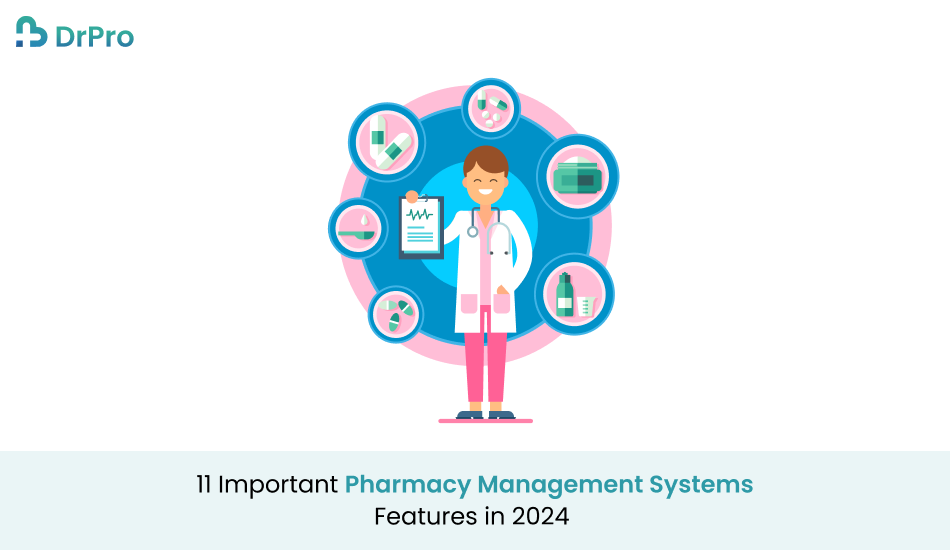Quick Summary
An effective pharmaceutical operation system 2024 must include features like real-time force shadowing, traditional operation, strong security, AI-driven analytics, excellent integration with healthcare networks, and stoner-friendly connections to improve overall pharmaceutical operations and patient care.
Introduction
To set up Pharmacy management systems and software to offer pharmacy owners an effortless client experience, any drugstore needs an intelligent system. The use of technology is advancing at an unbelievable rate across every industry. A drugstore operation system must be connected with apothecaries.
With the best PMS, your drugstore business will grow faster. With the support of the drugstore operation result, the drugstore can go digital. It keeps an eye on the way the company is run. Furthermore, the approach improves customer satisfaction. It also makes use of mobile apps, a centralized system for data storage, and web-based ordering processes. Owners of pharmacies that use PMS maintain updates on their staff and inventory. The solution is an integrated platform for managing workflows. It supports a healthful plant. The group’s ongoing is supported by the platform.
List of Features of the Pharmacy Management System
A general PMS that improves patient care and operational efficiency by improving inventory control, prescription processing, patient records, billing, and regulatory compliance. Here Are A Few Of Their Topics:
Inventory Management
The Pharmacy Management System’s inventory management includes the careful monitoring and management of pharmaceutical products. It has features accessible, including batch tracking, expiring date monitoring, real-time inventory changes, and automatic stock replenishment notifications.
It makes sure that pharmacy controls their stock levels, avoid waste, and keep a proper supply of goods to meet the needs of patients.
Some of these advantages are; tracking of batches and their expiry dates, the real stock position, and restocking signals for ease of the pharmacists while restocking. Not only does it help ensure that the needed medications are in stock but it also has the advantage of minimizing losses occasioned by expiring or unused medicines. In the overall receipt and or dispensing of the various products, the PMS made it possible that the pharmacies were well stocked and if not, conducted themselves in the best way it should for the proper management of the stock.
Electronic Prescribing
The Electronic Writing features of the PMS Software allow medical professionals to digitally create and submit prescriptions to pharmacies directly from their electronic health record systems.
With the help of this technology, pharmacists can quickly review and fill prescriptions that have been suggested by doctors, speed the distribution of prescriptions, and remove writing errors that make it difficult to understand.
Through the integration of the EHR systems, the PMS enables practicing pharmacists to receive prescriptions within short periods and fill them even faster, hence enhancing the prescriptions to fit the patient and other stakeholders’ needs. It also helps in overseeing or monitoring the medication histories as well as preventing cases of forged prescriptions.
Patient Management
In maintaining detailed patient profiles and histories, the PMS’s Patient Management capability allows complete patient care.
Features including prescription records, allergy alerts, medication histories, patient background information, and ways to interact for patient counseling have been included.
It makes it possible for pharmacists to work effectively with medical professionals to improve patient outcomes, guarantee drug adherence, and offer customized therapy.
Since these matters are in a ready reference format, the pharmacists can go through and advise other health care practitioners to make sure the patient the correct medicine and treatment. In this respect, since the PMS compiles a detailed record of each patient’s medication, and their attendant diseases and ailments, the system assists in enhanced medication management that minimizes negative drug interactions, thereby optimizing patient care.
Billing and Insurance Management

The Pharmacy Management System’s Billing and Insurance Management automates the process of monitoring financial transactions about prescription dispensing.
It has services like processing claims, handling co-payments, invoicing, and insurance verification.
With the help of this feature, billing processes are improved, insurance provider reimbursement is ensured, billing errors are reduced, and patient and drugstore financial transparency is improved.
They also check the insurance status, handling all the claims and all the issues related to the same at a higher speed which at the same time helps in reducing the chances of error in billing and thus makes the monetary transactions more believable and reasonable. Therefore, while passing some of the savings to patients in the form of lower prices, they are also able to mechanisms to balance the returns from the insurers to the plan while easing the workload on employees.
SMS & Notifications
In text messages and notifications, pharmacies can pass on important data to patients, healthcare providers, and staff members due to the PMS’s SMS & Notifications capacity.
It has features such as emergency alerts, promotional communication, healthcare pickup notifications, prescription refill alerts, and appointment reminders.
Effective communication channels, increase operational efficiency, improve compliance with medication, support patient engagement, and provide current data on healthcare facilities.
This particular feature helps to provide interaction with the patient and confirm to the patient the medications they were prescribed and the next appointment date. It also increases the efficiency of a pharmacy as I shall show because it helps in managing the procedures hence leading to instances where prescriptions are not missed or where preparing the medication takes a lot of time.
Reports & Analytics
This report and analytics feature provides customers with useful information including patient demographics, prescription patterns, business operations, and financial results.
It has dashboards, data visualization tools, and customizable reports for analyzing important variables such as prescription volume, inventory management system turnover rates, sources of revenue, adherence rates, and observing regulations.
The software supports pharmacies in improving overall performance and patient care outcomes, improving processes, identifying cost-saving opportunities, and making well-informed decisions.
The integrated reports and dashboards of PMS can give pharmacy managers prescriptive solutions regarding the specific changes that need to be implemented to improve operations, minimize expenses, and deliver outstanding patient care.
Centralized Database
All important information about drugs, patients, prescriptions, inventory, and transactions is handled and maintained in the Software using a single database that is centrally located.
Data security, accuracy, and consistency are provided by this centralized approach. It makes real-time information open to administrators and pharmacists, as well as other approved specialists, from any location within the pharmacy network.
This is reduced, soft communication with other healthcare systems is supported, and successful data management is made available by central databases.
Restore & Backup System
The PMS’s Restore & Backup System uses strong backup methods and disaster recovery plans to protect data continuity and security.
The database and records of transactions are backed up to protect from losing information because of software issues, hardware malfunctions, or unplanned events like extreme weather.
With the support of this performance, pharmacies can quickly restore important data and immediately work again with a minimum hold-up, providing regular service and dedication to privacy rules.
Customer Management System
Pharmacy management systems have a Customer Management System that allows pharmacies to keep detailed patient and consumer information and records.
Services which include transaction history, communication environments, medicine choices, and loyalty program management are all available.
By allowing customized interactions, improving medication through focused communication, and optimizing advertisements based on feedback from customers, this approach improves client service.
Integration with Third-party Software
The PMS integration with third-party software allows easy interaction with other healthcare IT systems, such as accounting software, electronic health records electronic prescription systems, and laboratory information management systems.
It improves data interchange, removes errors made by humans in data entry, improves work productivity, and supports programs for collaborative care in different types of healthcare.
To be able to meet particular operational and regulatory requirements, it helps pharmacies to make the most of their current IT investments by implementing the highest-quality solutions.
Regulatory & Compliance
The Software’s Regulatory & Compliance features ensure submitting to the laws and regulations defining the pharmaceutical industry and patient safety. It has elements such as medication treatment management, drug utilization review, keeping up with state and federal rules (like HIPAA, and FDA suggestions), and reporting requirements (such as reporting on banned pharmaceuticals).
Conclusion
In conclusion, technology, integration, and a focus on caring for patients will define the development of pharmacy management systems in 2024. Modern PMS solutions allow pharmacies to improve medication safety, improve productivity, and provide better patient outcomes in a more digital healthcare environment by integrating these 11 important features.
Several things like recipe processing, stock control, and patient management provide all essential functions and allow pharmacists to devote more time to patients. Features such as drug interaction checks and medication therapy management are extremely important to maintain patients’ safety and enhance the outcomes of the treatment procedure. Additionally, the EHRs and billing systems should also integrate as a prerequisite for a connected healthcare environment that will boost the exchange of data and functionality.
Together, ProjectTree and DrPro offer a powerful integration that enhances productivity and effectiveness across project management and healthcare sectors.
FAQs
1. Why is a pharmacy management system important?
A pharmacy management system is a system that is used to work on all the necessary operations of a pharmacy including prescription processing, product inventory control, billing, and reporting as well as general compliance.
2. In 2024 why are pharmacy management systems important?
By 2024 the pharmacy management systems will play a part in the optimization of processes, effective eagle safety, and production of efficiencies by following the trends in the healthcare technology.
3. What should one consider while selecting pharmacy management system?
Pharmacy Management Systems are the electronic prescriptions, stock control, patients’ database, reports, and accommodations for billing among others.
4. The benefits of pharmacy software in patient care?
Pharmacy Management Systems software properly dispenses prescriptions retains patient records, discourages mistakes, and speeds up operations for better patient satisfaction.
5. Will the application of a pharmacy management system improve their status of compliance with the law?
Indeed, most systems do integrate features that assist pharmacies to be in line with regulatory requirements and monitor narcotics together with keeping good records.


